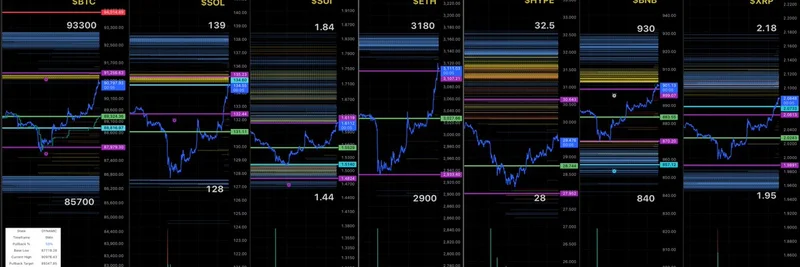Hey there, crypto enthusiasts! If you’ve been keeping an eye on the latest trends in the blockchain world, you’ve probably noticed something frustrating about airdrops. That’s right—most tokens from these free giveaways tend to crash almost immediately after launch. Let’s dive into a recent tweet from nxxn on X that breaks this down and explores what might come next.
The Airdrop Sell-Off Frenzy
nxxn points out a key issue: "Everyone rushes to sell - and they’re not wrong." When a project drops free tokens into your wallet, it’s tempting to cash out right away, especially if the token’s value spikes at the Token Generation Event (TGE). But here’s the catch—about 99% of these tokens end up dumping instantly. Why? It’s simple: too many people are selling at once, creating massive sell pressure that drags the price down.
This phenomenon isn’t just a one-off. nxxn’s tweet references a screenshot from earlier (showing a $155.13 value for Fragmetric dropping by $2.99), highlighting how even hyped-up airdrops like Fragmetric can take a hit. The rush to sell makes sense—many recipients see airdrops as a quick profit opportunity rather than a long-term investment. But this behavior creates a vicious cycle that hurts both the token’s value and the project’s credibility.
The Root of the Problem
So, why does this keep happening? It boils down to how airdrops are structured. Many projects distribute large amounts of tokens to the public with no restrictions, like vesting schedules (where tokens are released gradually over time). Without these controls, early recipients can sell off their entire stash the moment the token hits an exchange. This flood of sellers overwhelms buyers, leading to that dreaded price dump.
nxxn suggests this isn’t just a Solana problem—it’s a crypto-wide issue. Other users in the thread, like CryptoBits, chime in with ideas like the "memecoin jeet mentality," where people treat tokens like a game of quick wins rather than serious investments. It’s a mindset that’s fun for some but tough on the ecosystem.
A Glimpse into the Future: Tokenomics Experiments
The good news? Projects are starting to fight back. nxxn predicts we’ll see more "tokenomics experiments," like airdrops with vesting schedules or other mechanisms to slow down sell-offs. Vesting means tokens are locked for a set period, released gradually to encourage holders to stick around and support the project long-term. This could stabilize prices and give teams breathing room to build something valuable.
But will it work? The thread shows mixed reactions. Some, like STRYED0R, doubt vesting will stop the "jeet" (quick sell) crowd, arguing that people will just wait it out and dump once the tokens unlock. Others, like RandomGuy, point to broader market trends—big players are piling into Bitcoin and Solana, leaving altcoins and new tokens struggling for attention.
Lessons from Success Stories
Not all hope is lost, though! The thread also nods to projects like HYPERLIQUID, which thrived without vesting because it had clear growth and community buzz. This suggests that strong development, utility, and hype can outweigh the need for strict token controls. Similarly, nxxn’s praise for $BONK shows how reinvesting revenue into the ecosystem (like burning tokens or rewarding stakers) can build trust and value.
What This Means for You
If you’re a blockchain practitioner or just a curious investor, this is a heads-up. Airdrops can be exciting, but they’re risky if you’re jumping in for a quick flip. Holding onto your convictions, as CryptoBits suggests, might pay off if the project has solid fundamentals. Keep an eye on tokenomics—factors like supply, distribution, and incentives (as explained on calebandbrown.com)—to spot the winners from the duds.
At Meme Insider, we’re all about helping you navigate this wild world of meme tokens and beyond. Stay tuned for more insights, and let us know your thoughts in the comments—have you scored big on an airdrop, or gotten burned? Let’s learn together!


